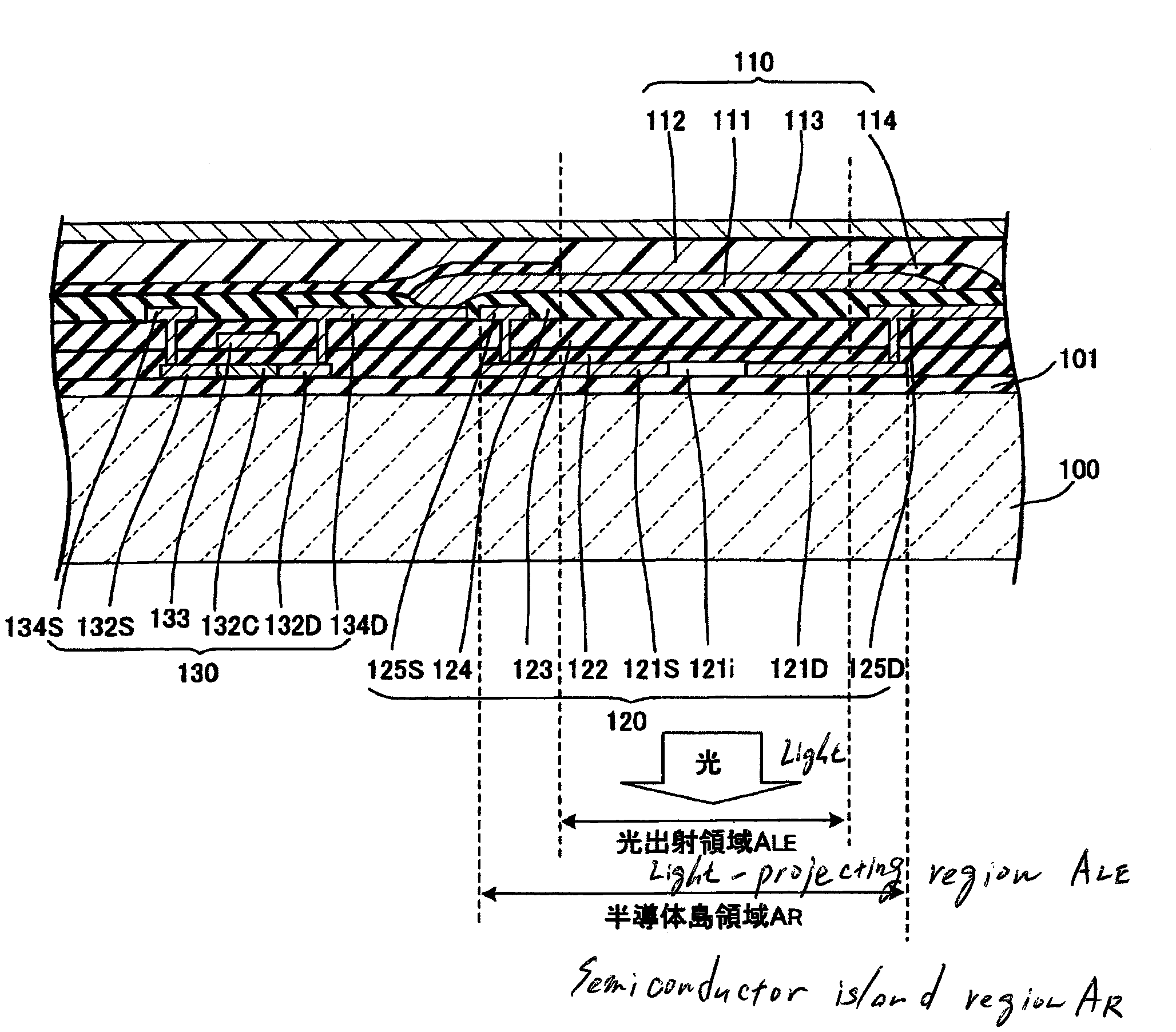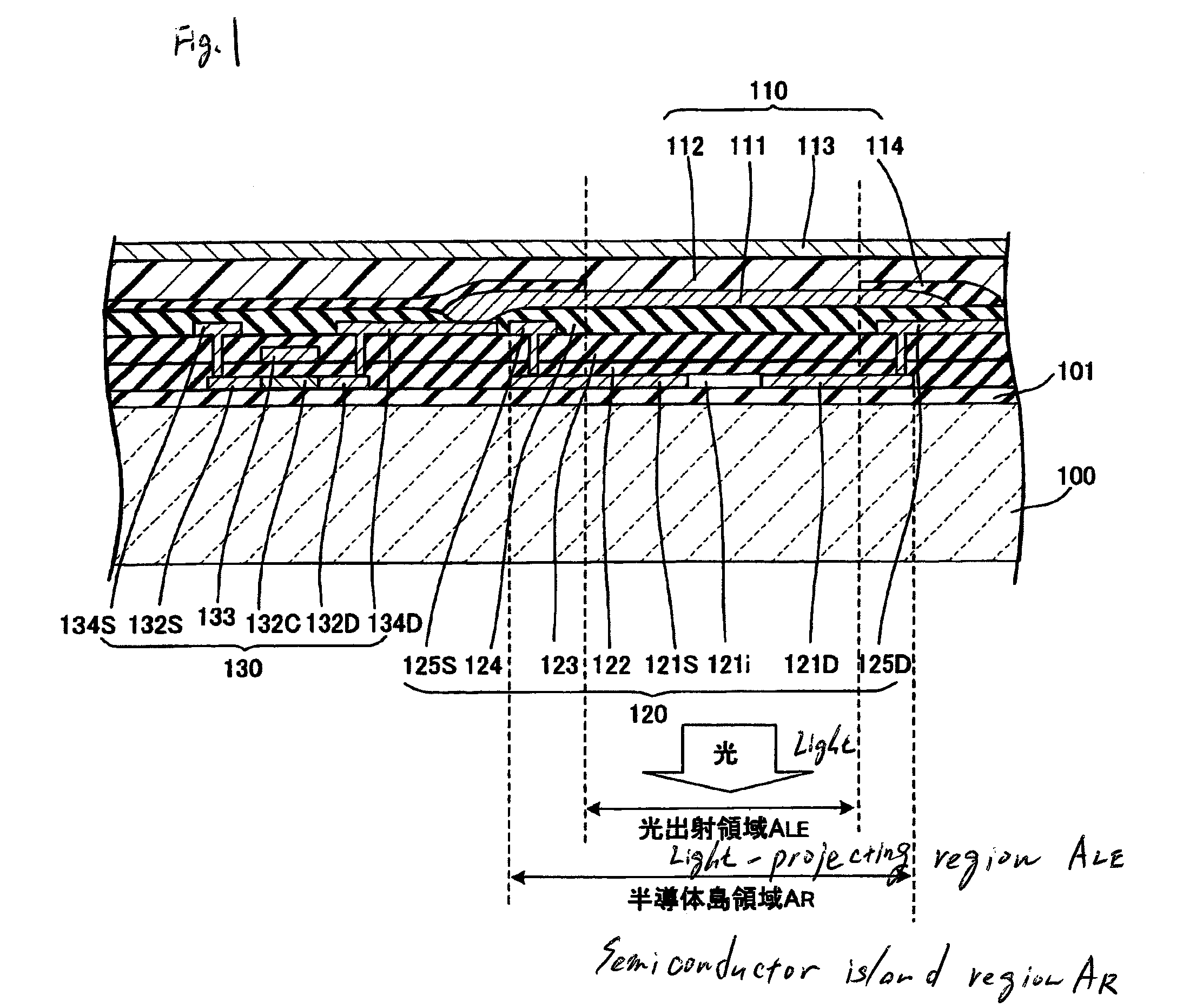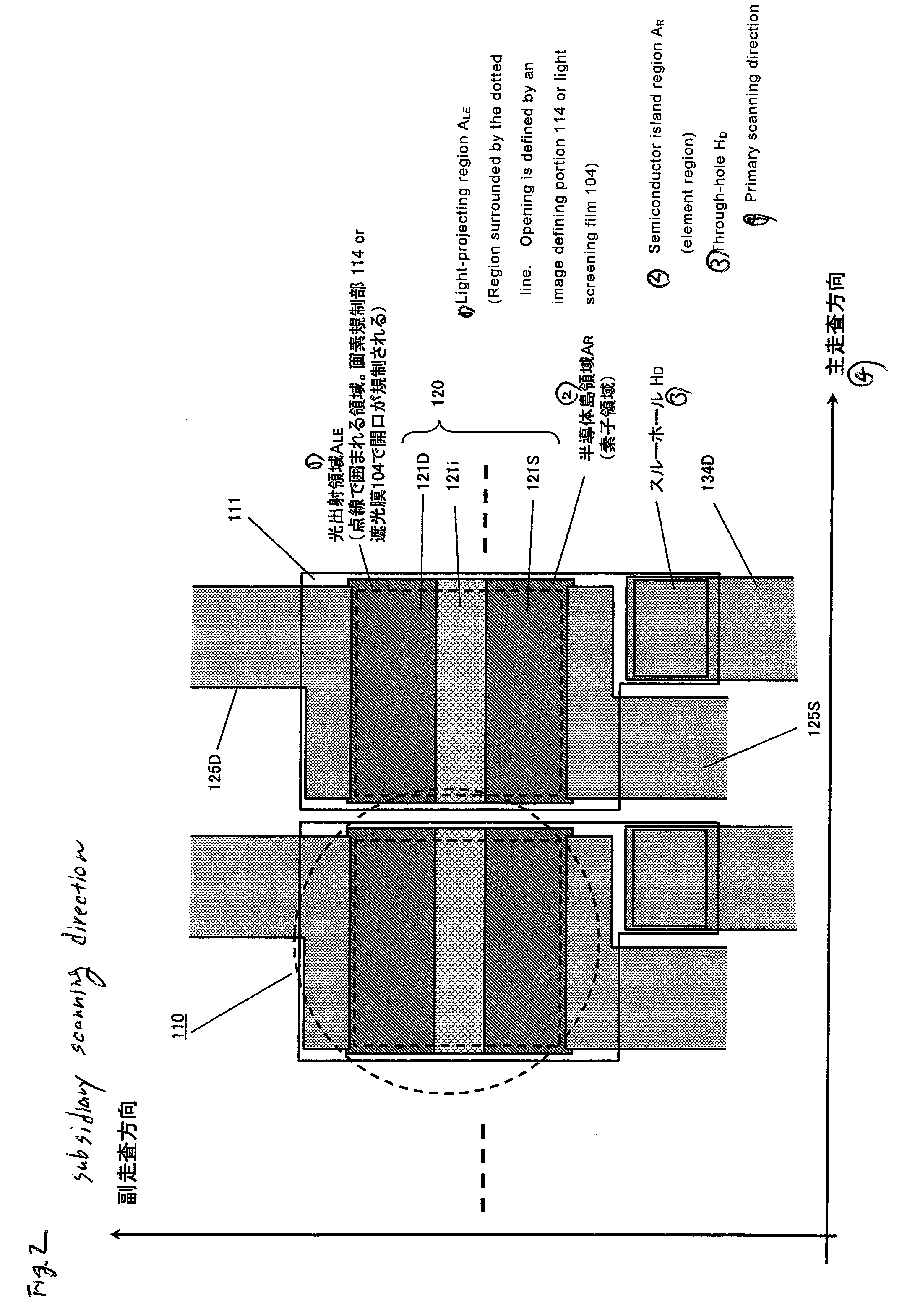Light-emitting device and method for the production of light-emitting device
- Summary
- Abstract
- Description
- Claims
- Application Information
AI Technical Summary
Benefits of technology
Problems solved by technology
Method used
Image
Examples
embodiments
[0118]Embodiments of implementation of the embodiment will be described in connection with the attached drawings.
[0119]Embodiments 1 and 2 will be described focusing on a light head employing a light-emitting device according to the invention.
[0120]In Embodiment 3, an example of image forming device having a light head employing the light-emitting device according to the invention incorporated therein will be described in detail.
[0121]In Embodiments 4 and 5, examples of the configuration of a light-detecting element will be described.
[0122]In Embodiment 6, a display device employing the light-emitting device according to the invention will be described.
[0123]In Embodiments 7 to 11, the configuration of a light-detecting element will be described in detail.
embodiment 1
[0124]FIG. 1 is a sectional view illustrating the configuration of a light head employing the light-emitting device according to Embodiment 1, particularly the peripheral configuration of an electroluminescent element which is a light-emitting element provided in the light head. FIG. 2 is a plan view of the electroluminescent element according to Embodiment 1.
[0125]The disposition of the light-emitting element and light-detecting element according to the invention will be described in detail in connection with FIGS. 1 and 2.
[0126]FIG. 1 depicts the vertical positional relationship of the various layers constituting the electroluminescent element 110 which is a light-emitting element and the light-detecting element 120. In the light head, the electroluminescent element 110 is laminated on the top of a thin film transistor (TFT) constituting the light-detecting element 120 formed on the glass substrate 100 and the outer edge of a semiconductor island region made of a polycrystalline s...
embodiment 2
[0226]FIG. 7 is a sectional view of the light head according to Embodiment 2 in the form of top emission structure. The term “top emission structure” as used herein is meant to indicate a structure arranged such that the light outputted from the light-emitting layer 112 propagates toward cathodes 113a and 113b provided on the top of the light-emitting element 112 (surface of the glass substrate 100 having the thin film transistor and electroluminescent element 110 formed thereon) as opposed to the bottom emission structure.
[0227]In the configuration of FIG. 7, a reflective layer 105 made of a metal is provided on the glass substrate 100 so that the light is emitted in the direction toward the cathode. In FIG. 7, the reflective layer 105 is electrically connected to an electrode which is not shown or the like. By properly controlling the potential at the electrode, the light-detecting element 120 can be operated as a so-called bottom gate type transistor. In this manner, a light-emit...
PUM
 Login to View More
Login to View More Abstract
Description
Claims
Application Information
 Login to View More
Login to View More - R&D
- Intellectual Property
- Life Sciences
- Materials
- Tech Scout
- Unparalleled Data Quality
- Higher Quality Content
- 60% Fewer Hallucinations
Browse by: Latest US Patents, China's latest patents, Technical Efficacy Thesaurus, Application Domain, Technology Topic, Popular Technical Reports.
© 2025 PatSnap. All rights reserved.Legal|Privacy policy|Modern Slavery Act Transparency Statement|Sitemap|About US| Contact US: help@patsnap.com



